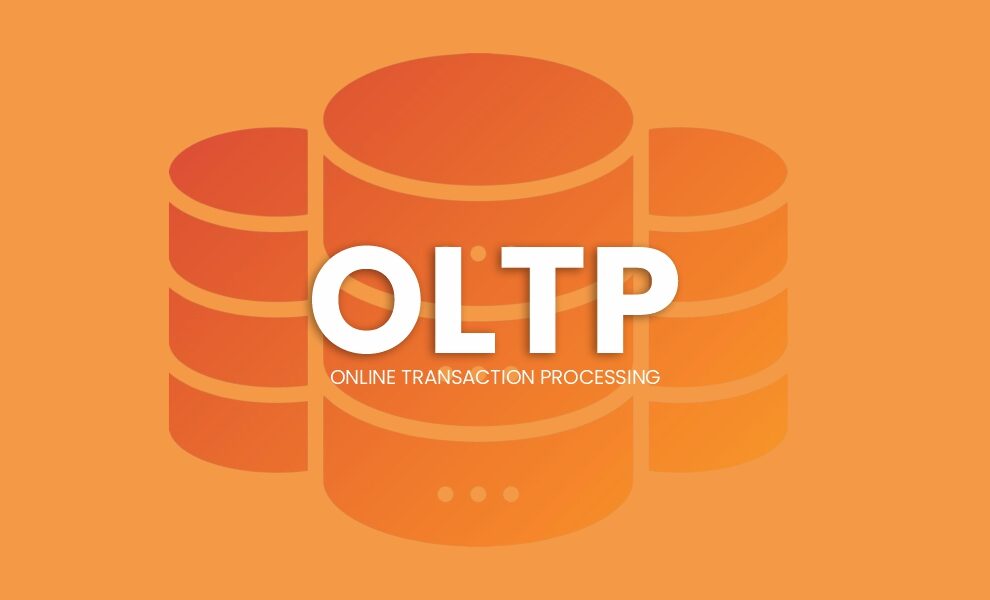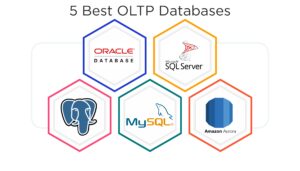In the modern-day business world, where transactions take place online every second, a sound database system is indispensable. OLTP databases form the backbone of most important business processes. Professional databases process huge transactions at the same time with speed and precision.
In this blog, we will review 5 top best OLTP databases that specialize in handling high-speed transactions. We will investigate their essential features, advantages, and best applications to help you make a well-informed choice for your business requirements.
Understanding Online Transaction Processing Databases
Online transaction processing systems manage transaction-oriented applications by processing large numbers of simple transactions quickly. These databases differ from analytical systems in their focus on current operational data rather than historical trends. Among the best OLTP databases, you will find they share these core characteristics:
- High-speed processing of large numbers of small transactions.
- It supports large numbers of concurrent users.
- Strictly following the ACID principles (atomicity, consistency, isolation, and durability).
- Tuned for insert, update, and delete operations.
- Real-time data accessibility.
These systems increase necessary business functions across industries such as banking (ATM transactions), e-commerce (order processing), and healthcare (patient records management).
5 Best OLTP Databases for High-speed Transactions
1. Oracle Database
Oracle database continues to be the leader in enterprise OLTP solutions. Its design provides outstanding performance for high transaction volumes while ensuring data integrity. Some of the key benefits of using Oracle database are:
- Advanced concurrency control for multiple users.
- Real application cluster (RAC) for high availability.
- Comprehensive security features, including encryption.
- Automatic performance tuning capabilities to increase performance.
- Partitioning options for large datasets.
Oracle’s in-memory feature increases performance by storing frequently used data in RAM and places it firmly among the best OLTP databases. This makes the database reliable and perfect for places like banks and big companies.
2. Microsoft SQL Server
Microsoft SQL Server provides a strong OLTP solution, especially for organizations using Microsoft technologies. Its in-memory OLTP engine delivers performance improvements compared to traditional disk-based approaches.
Notable features include:
- Tight integration with Windows Server and Azure.
- Always on availability groups for failover protection.
- Memory-optimized tables for quick transactions.
- Delayed durability options for performance optimization.
- Comprehensive management tools.
Recent updates have improved the Microsoft SQL server’s parallel processing. This makes it great for environments that mix transactional and analytical tasks and is considered one of the best OLTP databases.
3. PostgreSQL
PostgreSQL is a strong open-source option for OLTP workloads. It has earned its place among the best OLTP databases by combining advanced features with cost-effectiveness. Key features of PostgreSQL:
- The multi-version concurrency control (MVCC) for high throughput.
- Extensive customization options.
- Strong data integrity protections.
- Growing ecosystem of extensions.
- Excellent community support.
Improvements in recent parallel query performance and partitioning have fortified PostgreSQL as a competitive choice for high-end transactional applications. Most organizations value its feature balance and cost. This makes it increasingly competitive among the best OLTP databases for demanding applications.
4. MySQL
MySQL remains a favorite choice for web-based OLTP applications. Its ease of use and dependability make it ideal for various transactional systems. Key benefits include:
- Proven performance for read-heavy workloads.
- Straightforward setup and administration.
- Strong replication capabilities.
- Online DDL operations for maintenance.
- Large ecosystem of tools and services.
The InnoDB storage engine follows complete ACID compliance. This is perfect for applications that need strict data consistency. Recent updates have improved optimizer statistics and connection handling for better OLTP performance. It remains a popular choice among the best OLTP databases for web applications.
5. Amazon Aurora
Amazon Aurora is a cloud-native design for OLTP databases that combines known interfaces with new architecture. Its distributed nature provides outstanding scalability and reliability. Notable features include:
- Automatic scaling of storage up to 128 TB.
- Low-latency read replicas.
- Serverless support for fluctuating workloads.
- Global database features.
- Continuous backup and point-in-time recovery.
Aurora’s MySQL and PostgreSQL compatibility makes migration easy while offering better performance. The service is especially appealing for companies already hosted on AWS infrastructure.
Implementing OLTP Databases: Best Practices
Successful OLTP implementation requires careful planning and execution. To maximize the benefits of the best OLTP databases, consider these necessary practices:
- Schema Design: Design normalized schemas that trade-off performance with data consistency. Accurately model relationships between entities.
- Indexing Strategy: It implements targeted indexes to speed up frequent queries.
- Connection Management: Use connection pooling to reduce overhead by establishing new connections for each transaction.
- Workload Isolation: To avoid interference, it separates transactional and analytical processing wherever feasible.
- Monitoring: To identify potential issues, it monitors important metrics such as transaction rate, lock contention, and cache efficiency.
- Capacity Planning: To ensure ongoing performance, regularly review resource usage and plan for expansion.
- Maintenance Scheduling: To keep minimum user impact, it executes periodic activities such as statistics updates during off-peak hours.
The Future of OLTP Technology
OLTP systems keep developing to address increasing business needs. Some of the trends are influencing their creation:
- Distributed Architectures: Those that integrate legacy OLTP features with horizontal scalability are being approached.
- Automated Tuning: Machine learning is used to optimize performance without human intervention.
- Hybrid Processing: Solutions that combine transactional and analytic features are increasingly popular.
- Persistent Memory: Emerging storage technologies are cutting latency by closing the memory-to-disk gap.
- Serverless Choices: Cloud services that automatically scale are making variable workload operations simpler.
These trends are poised to make OLTP systems more powerful and manageable in the years to come.
Choosing The Right Online Transaction Processing Solution
Selecting the right OLTP database involves consideration of several factors:
- Performance Requirements: Look at both immediate requirements and project growth in the volume of transactions.
- Technical Capabilities: Consider your staff’s experience with various database technologies.
- Cost Controls: It measures licensing fees against needed features and support.
- Integration Requirements: It assesses compatibility with existing systems and applications.
- Security Needs: It verifies the solution’s compatibility with your compliance and data protection requirements.
- Scalability: It ensures that the database is able to support future expansion without significant redesign.
Conducting thorough testing using representative workloads prior to making your decision may avoid expensive errors. Numerous organizations find value in executing proof-of-concept implementations with their true application patterns.
Wrapping Up
Choosing the best OLTP database is important as electronic transactions grow. Each database has its own strengths. Oracle is great for big companies, SQL Server works well with Windows, PostgreSQL is flexible for open servers, MySQL is simple to use, and Aurora is perfect for cloud setups.
Knowing what each one offers and following best practices helps organizations build reliable and efficient transaction systems.
To learn more, visit HiTechNectar!
FAQ
Q1: What are the critical factors in OLTP performance?
Answer: Critical performance factors are storage speed, memory allocation, effective indexing, query optimization, and correct hardware sizing for anticipated workload.
Q2: Can NoSQL databases handle OLTP applications?
Answer: Some NoSQL databases allow transactional capabilities, but traditional relational databases offer better ACID compliance and more advanced tooling for OLTP workloads.
Q3: What is the main function of an OLTP database?
Answer: OLTP databases are designed to handle many transactions in a short time while ensuring data consistency. They support operating systems such as order processing, financial transactions, and inventory control.
Q4: How are OLTP databases different from data warehouses?
Answer: OLTP systems are concerned with up-to-date operational data and high-speed transaction processing, whereas data warehouses hold past data for analysis and reporting.
You Might Like:
Understanding the Best NoSQL Databases
Here are some pivotal NoSQL examples for businesses



